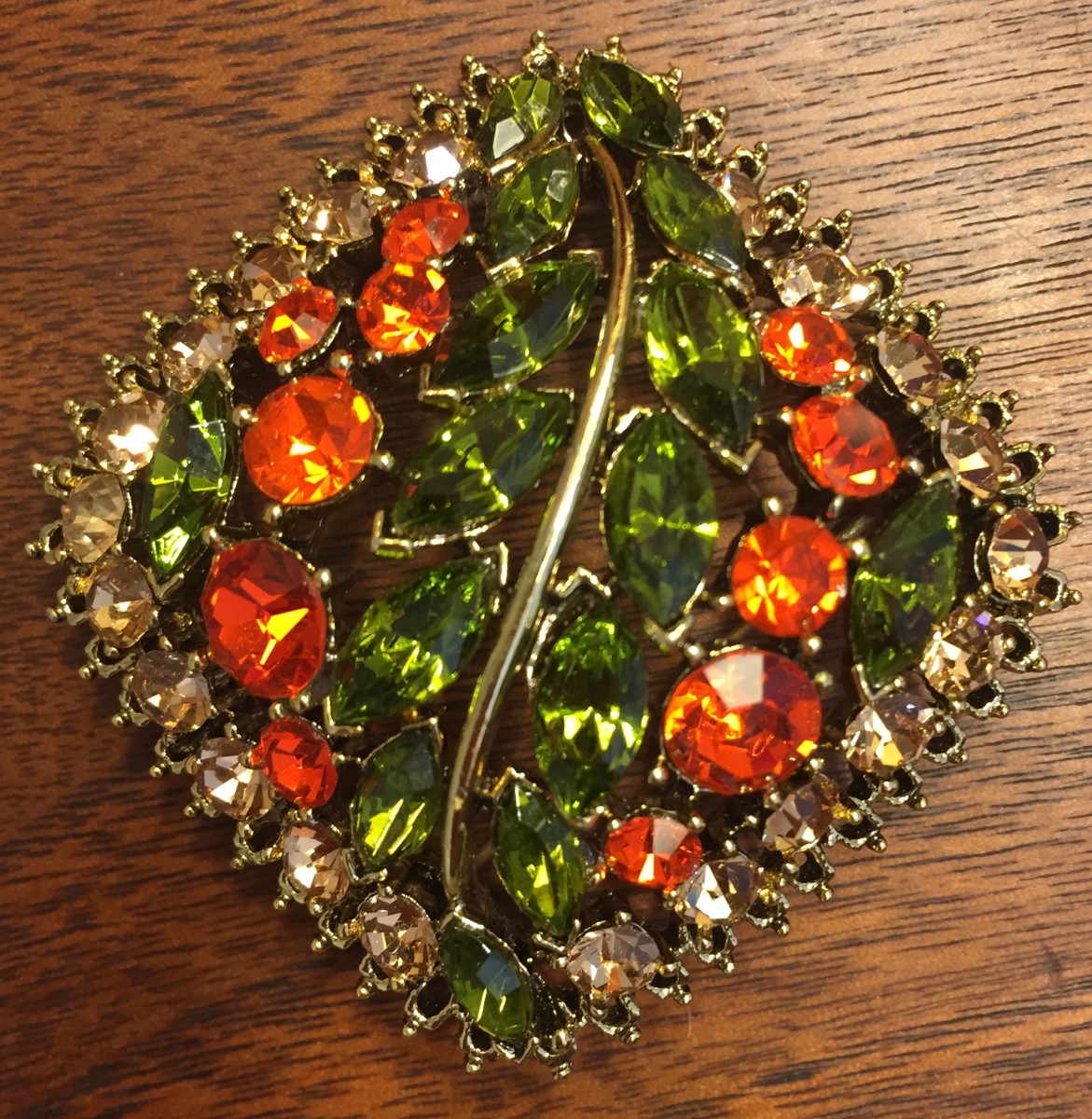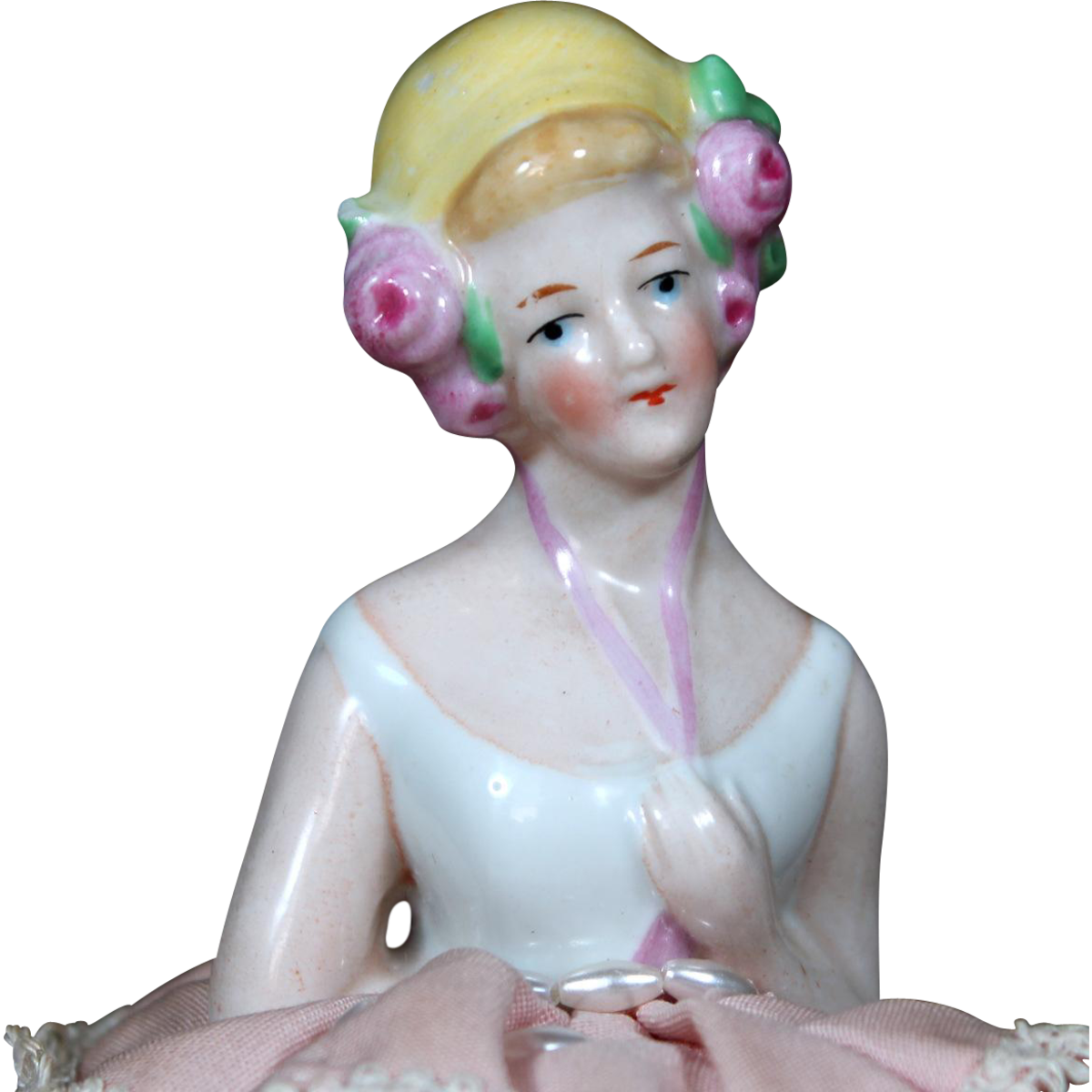Collecting Victoriana
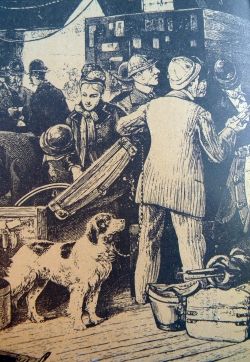
Victorians', The First Great American Collectors
We all have our personal reasons for collecting what we enjoy. And what we do with what we collect is as varied as the people we are. But the first real American collectors were undeniably the Victorians. The American Victorian era is best defined not as a style of architecture, a type of furniture, or a mode of decorating but as an era from 1830 to the start of World War I, defined by common attitudes, beliefs and behavior.
The American Victorian's were a nation of object-conscious people that have left us with the greatest number of artifacts for study. A people who revered abundance as an expression of their taste and desires marks this era in American history. This was a time in American history that if an object was needed for a certain task it was designed and made.
Clustered on tabletops and mantles, tucked into niches, perched on pedestals and covering every inch of small shelves, were the collections of cherished objects in a Victorian home. The Victorian people collected objects with a certain opulence that spoke of material wealth and success. Today collecting Victoriana is about collecting the charm of the Victorian lifestyle. Collecting what the greatest collectors collected! Victorian objects speak eloquently to us about the domestic habits of a bygone era. They represent weighty and telling social significance.
I find it harder and harder every day to live
up to my blue and white china.
Oscar Wilde
The Love for Blue-and-White China
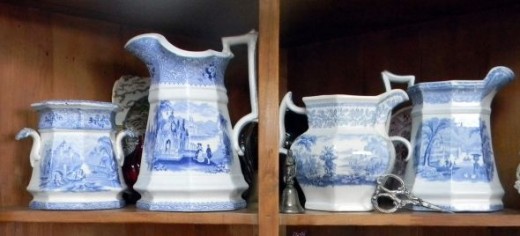
In the 1870's a paler blue from the days of Staffordshire (1780-1840) came about. Incorporating imaginary scenes. This new blue-and-white earned the name Romantic Staffordshire, becoming the rage and collected briskly until war broke out. Collecting blue-and-white became a recognized symbol of the Aesthetic movement and offered a new type of status for a Victorian. The trend of the movement saw refined tastes, arts and culture. The greatest influence was Japanesque scenic designs; a true love for nature incorporated with the arts and tastes of the Orient.
Oscar Wilde, while still an undergraduate at Oxford, spent beyond his means and displayed a mantel of blue-and-white.
The process for making the blue-and-white china is called transferware. The plate making was left up to the men. When the plates were made the women were responsible for laying a tissue paper against the inked plate. Positioning the inked tissue against the hard clay surface then rubbing it with a soft flannel would transfer the design. Washing with cold water would allow the tissue to float off.
Great Information All About VICTORIANA! - Collecting Victorian Treasures
American Victorian Silverplate - American's Are the Creators of Figural Silverplate!
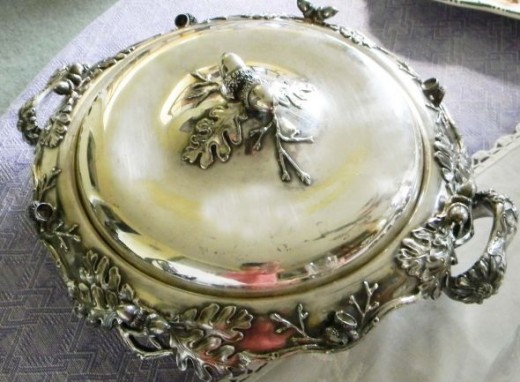
Before 1850, the precious metal, silver, was generally confined to the nobility. A well-to-do man who wished to emulate silver used pewter, which was the closest readily available substitute. Not until 1840 when an Englishman named Elkington patented a process for coating pure silver on a base metal by electrolysis, that silverplate became mass available and replaced pewter in the homes. This process caught the attention of the American "Yankee" silversmiths.
In 1859 the discovery of Comstock Lode (the first U.S. discovery of silver ore) made a seemingly inexhaustible supply of silver available to American manufacturers. Within that year over 234 manufactures of silver and plated ware came about in North Eastern America. There was a far greater range of objects made from silver. It looked as if almost every possible article, down to the spittoon and chamberpot was being made in silverplate. The manufacturing of silverplate reached its zenith by the 1920s and altogether halted before WWII.
The photo above: This beautiful pattern was originally created by Southington Silver Co. then plated by Rogers & Brothers, both companies were located in Hartford Connecticut. It was not uncommon for companies to work together in this manner. This pattern is called the Charter Oak. Thousands of ornate and figural patterns were created during the day of American Victorian silverplate.
Great Collectors of Keepsakes - Clever Creations
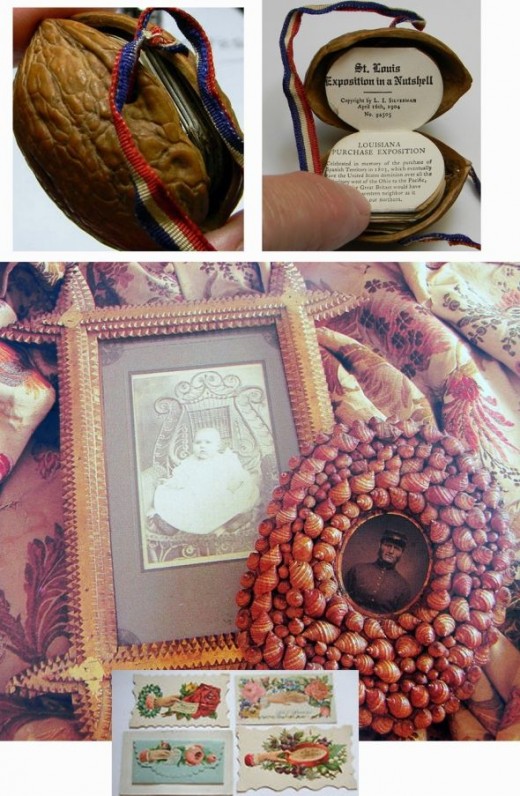
Objects disguised as other objects tickled the fancy of any Victorian. With an insatiable appetite for sentimentality gathering all kinds of keepsakes and souvenirs from their travels were always arranged and displayed according to a set of strict guidelines: 1. Collect objects with certain opulence, that spoke of material wealth and success. 2. Collect objects that "looked" expensive. 3. Collect objects that held an appealing references to the wonders of nature. and 4. Collect objects with rich ornamentation on any and all surfaces.
Small Victorian Treasures - The Calling Card
Keepsakes of all types were on display in a Victorian home. Dried flowers, pressed bouquets, pen and ink drawings, photo albums, postcards, autograph books, souvenirs, and calling card receivers.
Of all the Victorian ephemera calling cards are one of the most interesting. Calling cards were by no means a new invention for the Victorian but a popular custom. Both ladies and gentlemen carried a calling card. These cards were freely passed about from homes to businesses. It was customary for homes to have Calling Card Receivers or Cartes de Visite.
The exchange of cards was also an important part of predual etiquette and proceeded with the stinging slap of leather gloves across the face.
Calling cards were often beautifully designed and featured nothing more than the persons name. Additional information was written on the back side of the card. The cards often had colorful emboss-printed chromolithographic overlays, glued at one end so that they could be lifted to reveal the name. When one of these cards was left the overlay was peeled off and collected in albums. These overlays were called "scraps".
Victorian Treasures in the Round, Buttons! - Charm Strings, American's First Button Collectors
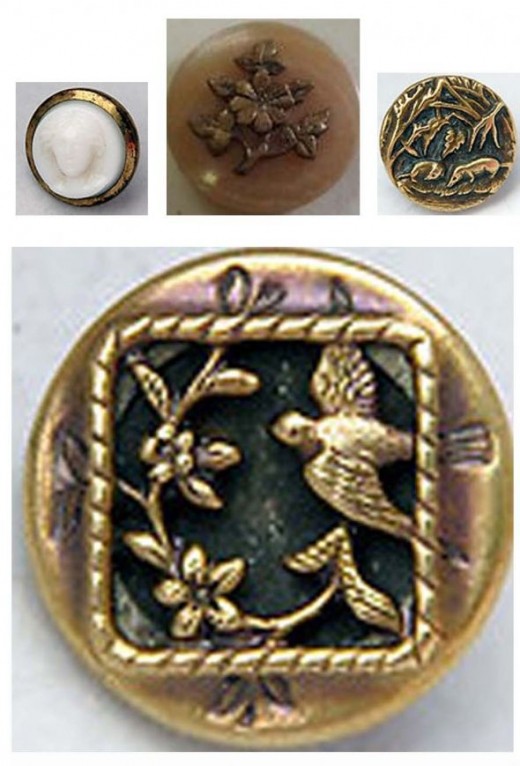
Victorian Folklore,"1000 Buttons for Love and Marriage" is made upon the memory strings or charm strings which were the fad of young Victorian girls. A popular Victorian legend said to all young girls approaching their teen years was to collect and string up to 999 buttons on a single cord. The 1000th button was to come from her "prince charming" but if the young woman adds the 1000th button herself she will be doomed the fate of spinsterhood. Now, there are many slight variations on this legend but the answer to "Whom will I marry" was the question of each young girl who gathered beautiful buttons to string on a single rope.
Young Victorian girls gather together to string their buttons and share their stories of each button they had collected. The buttons in their collection were not to be newly purchased but rather collected from Mother's and Grandmother's button boxes. Friends and family would bring buttons with colorful stories of where they came from. Unfinished charm strings were always left out as a reminder and to inspire visitors to contribute a button. More often than not the charm string became a game of rivalry or contest to collecting the most buttons.
Victorian Buttons - Miniature Tactile Treasures
In the mid 1800's buttons were made into miniature works of art and made of a variety of materials. Buttons were hand carved from wood, bone, ivory and shell. In May 1851, Nelson Goodyear patented a button made from India rubber. It was not actually rubber as we know it today but rather a plastic. By the second half the century buttons were produced in solid brass, silver, tin, enamel, china, porcelain, horn, leather, pewter, glass, celluloid, gutta percha and gold. A variety of paintings and platings were applied. Decorative relief patterns were applied as well as engraved.
I personally like the beautiful bracelets and necklaces made from victorian buttons.
More than just an autograph - Every Victorian was expected to be artistic and poetic.
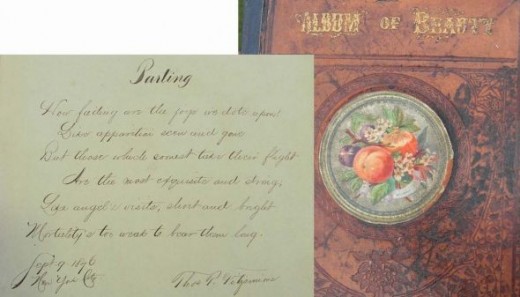
Autograph albums became a widespread fad in the 1870's. Coming up with unused prose to accompany one's signature became a challenge. Roses are red... just was not going to cut it! Autographs were generally original written with the thoughts for the owner in mind. The composition was usually poetic or contained sage advice.
The piece featured here reads:
How fading are the joys we dote upon
Like apparition seen and gone
But those which soonest take their flight
Are the most exquisite and strong;
Like angel's visits, short and bright
Mortality's too week to bear them long.
Victorian Autograph Albums
The best autograph albums that I have found were written in spencerian calligraphy and decorated with illustrations. Today, these albums are an excellent way to discover the thoughts and feelings of the Victorian people. Through sickness and war they expressed that life is rewarding but fleeting and friends are still the greatest possessions. Many albums contain colorful chromolithographic scraps. Many of the albums are beautifully illustrated with lithographic prints and elaborately pressed, inlay, or painted covers. The artistry and craftsmanship made these little gems to own.
Great American Collectors
The victorian era was a time of collecting many special items that held much beauty and expression for its collectors.
We continue to be collectors of something or other. And most of us have multiple types of collections. And some of us don't even know we are collecting.
Are you a great American collector?



